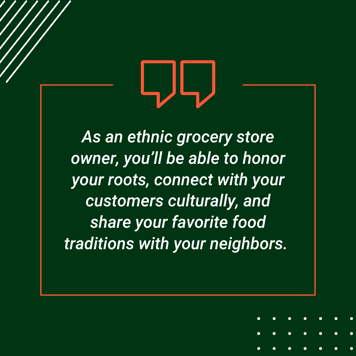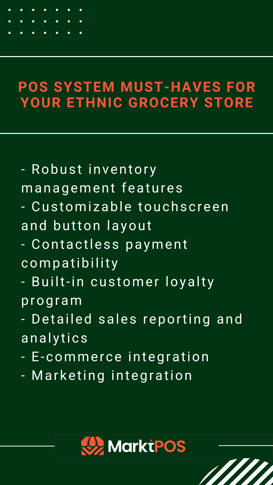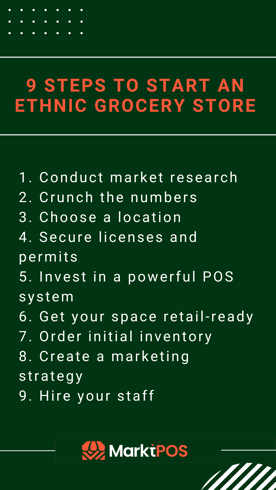1. Calculate Your Startup Costs
Starting a business from scratch is a significant undertaking, and before you start investing money into it, you’ll need to determine exactly how much it will cost to get your ethnic grocery store off the ground.
Here’s a list of the most common startup costs to help you plan ahead:
- Lease or purchase cost of your store’s location
- Renovation costs if applicable
- Store setup essentials like shelving and checkout counters
- Licensing and permits to keep your business in compliance with the law
- Insurance to protect your investment
- Initial inventory costs
- Staffing and training costs for your new employees
- Critical technology like a point of sale (POS) system
- Marketing costs for your grand opening
Every store’s startup needs will be unique (and the exact price associated with each varies), but planning for the cost of these items should start you down the right path.
2. Forecast Your Income and Project Your Cash Flow
Cash flow is the lifeblood of your business. This number represents the amount of money flowing in and out of your business, and calculating it correctly is critical for creating an accurate financial plan.
To project your cash flow, you first need to estimate all of your expected monthly operating expenses, including rent, utilities, payroll, staffing, and inventory costs.
Next, you’ll need to forecast your income. This means calculating your expected monthly sales by estimating your average transaction value and sales volume.
When forecasting your income and cash flow, make sure to account for any seasonal fluctuations that might impact your expenses and revenue. For example, your utilities may be higher in the warmest and coldest months of the year, but your sales may see a bump around the holiday season.
3. Find the Breakeven Point
Reaching your breakeven point will be the most rewarding and exciting milestone in the early days of your small business journey! Your breakeven point is when your store’s total sales meet your total expenses and you start to make a profit.
You can determine when your small business will start to generate a profit based on your startup costs and projected cash flow calculations.
Knowing your breakeven point is critical because it gives you an insight into how profitable your ethnic grocery store will be — and when you can expect to start making money from your venture.


 Here’s an overview of the tools you’ll most likely need:
Here’s an overview of the tools you’ll most likely need: 


